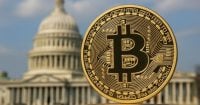Powell's Latest Speech: Rising Downside Risks to Employment, Balance Sheet Reduction May End
Federal Reserve Chairman Jerome Powell stated that monetary policy adjustments will continue to be based on the economic outlook and risk balance. He emphasized that there is no risk-free path in the process of balancing employment and inflation targets.
In the early hours of Wednesday, Eastern Eight District time, Federal Reserve Chairman Powell delivered a speech on the U.S. economic outlook and monetary policy.
In his speech, Powell elaborated on the role of the Federal Reserve's balance sheet and its function as a policy tool during the pandemic. He reviewed policy operations during the pandemic, discussed the current economic situation and the outlook for monetary policy, and emphasized the Federal Reserve's ongoing efforts to maintain economic and financial stability.
He pointed out that although some government data releases have been delayed due to the government shutdown, existing data indicate that the outlook for employment and inflation has changed little since September. He emphasized that the Federal Reserve will continue to adjust monetary policy based on the economic outlook and risk balance, rather than following a preset path.
Powell also stated that balance sheet reduction may end in the coming months. The Federal Reserve's goal is to ensure that the financial system has sufficient liquidity to control short-term interest rates and volatility in the money market. Powell noted that liquidity conditions are tightening, repo rates are rising, and there have been temporary liquidity pressures on certain dates. He emphasized that experience since 2020 shows that the balance sheet can be used more flexibly in the future.
The following are excerpts from Powell's speech regarding the economic outlook and monetary policy.
Excerpts from Powell's Speech (Translation)
Finally, I will briefly discuss the economic situation and the outlook for monetary policy. Although the release of some important official data has been delayed due to the government shutdown, we are still regularly reviewing a large amount of data from both the public and private sectors, which remains available. At the same time, we maintain a nationwide network of contacts through the regional Federal Reserve Banks, from which we gain valuable insights. These will be summarized in the Beige Book to be released tomorrow.
Based on the data currently available, it is fair to say that the outlook for employment and inflation does not appear to have changed much compared to our September meeting four weeks ago. However, data released before the government shutdown suggest that the momentum of economic activity may be stronger than expected.
As of August, the unemployment rate remained low, but the growth rate of non-farm employment had slowed significantly, which may be partly due to reduced immigration and a decline in labor force participation leading to weaker labor force growth. In such a less dynamic and slightly weaker labor market, the downside risk to employment appears to have increased. Although the official employment data for September has been delayed, existing evidence shows that the levels of layoffs and hiring remain low, and both residents' perception of job opportunities and businesses' perception of hiring difficulties continue to decline.
Meanwhile, the year-on-year core Personal Consumption Expenditures (PCE) inflation rate for August was 2.9%, slightly higher than at the beginning of the year, mainly because the rise in core goods prices outpaced the continued cooling of housing services prices. Existing data and surveys indicate that the rise in goods prices mainly reflects the impact of tariffs rather than broader inflationary pressures. Consistent with this phenomenon, short-term inflation expectations have generally risen this year, while most long-term inflation expectation indicators remain aligned with our 2% target.
The increase in downside risk to employment has changed our assessment of the risk balance. Therefore, we considered it appropriate at the September meeting to take further action and move toward a more neutral policy stance. In the process of balancing employment and inflation targets, there is no risk-free path for policy. This challenge is also reflected in the divergence of economic forecasts among committee members at the September meeting.
I would like to reiterate that these forecasts should be understood as a range of possible outcomes, with probabilities that change as new information emerges. This is also the basis for our dynamic policy-making at each meeting. We will set policy based on the development of the economic outlook and the balance of risks, rather than following a predetermined path.
Disclaimer: The content of this article solely reflects the author's opinion and does not represent the platform in any capacity. This article is not intended to serve as a reference for making investment decisions.
You may also like
Powell signals support for further rate cuts as U.S. job market cools
US seeks forfeiture of $14B in Bitcoin from Chen Zhi's pig butchering scam

US government holds $36 billion in Bitcoin after largest-ever forfeiture action

Antalpha’s $134M Tether Gold (XAU₮) Buy and Aurelion’s $150M Raise May Boost Tokenized Gold Lending

